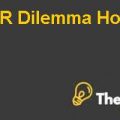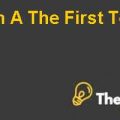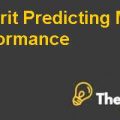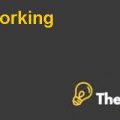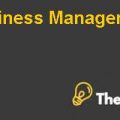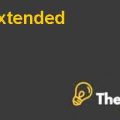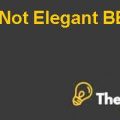Problem Statement
The management of the company has to decide the source of finance amongst the three financing options. In order to decide, the capitals structure and the credit rating has been taken into account.
Company Background
The company was established in July 1977 as the result of merger between Hutchison International Limited and Hong Kong and Whampoa Dock Company Limited.Cheung Kong, who represented the 10% of the market capitalization of all Hong Kong publicly-listed companies bought a large block of shares from Hong Kong and Shanghai bank in 1979 to become the controlling shareholder. In 1996, Hutchison limited hag the market capitalization of US$ 26 billion making it the largest company in Hong Kong. As of December 31, 1995, the company’s total consolidated shareholder’s funds were HK$ 58,839 million and the profit attributable to shareholders for the year 1995 was HK$ 9567 million.
By 1996, it had interest in property development and holding, ports and related services, retail and manufacturing, telecommunication, energy infrastructure and other investments. The company develops residential and commercial properties for lease. It had some projects in process on the mainland in which the group had interest included the development of US$ 2 billion Beijing Oriental Plaza.
It also owned Hong Kong International Terminals (HIT) which was the world’s largest privately owned and operated container terminal in terms of throughput. In addition, the Hutchison group owned and operated the port of Flexi stowed in the United Kingdom.
A.S Watson Hutchison retail subsidiary, operated three of Asia’s retail chains: Park n shop super markets,Watsons Personal care stores and Fortress.
Analysis
Yankee bonds are issued by a foreign firm denominated in U.S currency and traded on the U.S foreign bond market. In the past, the Asian firms have been slow in issuing these bonds but their interest in these bonds have been increasing. Due to this issue the management of Hutchison is considering to issue these bonds.
Firms issuing these bonds have two options. First it is to have a public offer of securities which required a registration statement with the Securities of Exchange Commission and the associated need to disclose financial and other information mandated by the Securities Art of 1933.
Second, 1990, the SEC adopted rule 144A that provided exemption from the registration requirements for resale of restricted securities to certain institutional investors. This rule was introduced to increase the liquidity of the restricted securities market and encourage non-US companies to raise debt. As the company needs financing its expansion, it is facing dilemma to choose from the number of resources it has. It has to decide between the equity, bonds, Straight debt and Euro bonds.
The traditional theory of cost of capital says that the cost declines initially and the rises as the debt rises. The Optimal structure is the one where the cost of WACC is the lowest.There are many assumptions behind this theory. Firstly, the company pays all its earnings as dividends. The gearing of the company can be changed immediately by issuing debt to repurchase shares or vice versa. The earnings of the company are expected to remain constant in perpetuity and all the investors share the same expectations about these future earnings. Business risk is also constant and taxation is also ignored(BPP).
There is another approach by the name of net operating income. In 1958, Miller and Modigliani proposed that the total market value of the company, in the absence of tax, is determined by two factors that is the total earnings of the company and the level of operating risk attached to those earnings. The total market value of the company is calculated by discounted the total earnings at a rate that is appropriate to the level of operating risk. This rate would represent the WACC of the company.By this theory, the cost of debt remains unchanged as the level of gearing increases and the cost of equity rises in such a way as to keep the weighted average cost of capital constant.There are assumptions behind the approach. A perfect capital market exists in which the investor has the same information upon which they act rationally to arrive at the same expectation about future earnings and risks. There are no transaction and tax costs. Debt is risk free and freely available at the same costs to investors and risks(BPP).Hutchison Whampoa Case Solutions
In 1963,Modigliani and Miller modified their theory to admit that the tax relief on interest payments does lower the weighted average cost of capital. The saving arises from tax relief on debt interest are the tax shield. They claimed that the weighted average cost of capital will continue to fall up to the gearing of 100%(BPP)...............................
This is just a sample partial case solution. Please place the order on the website to order your own originally done case solution.

